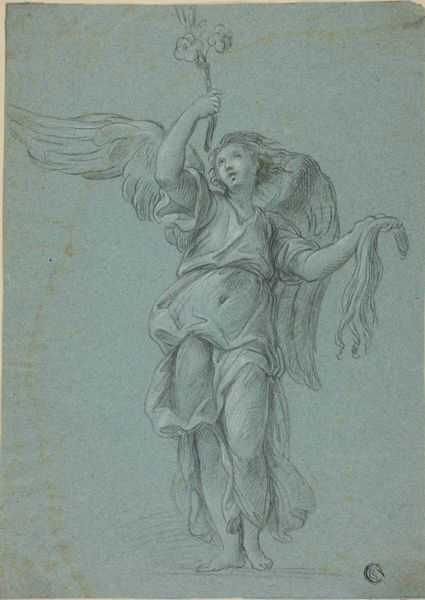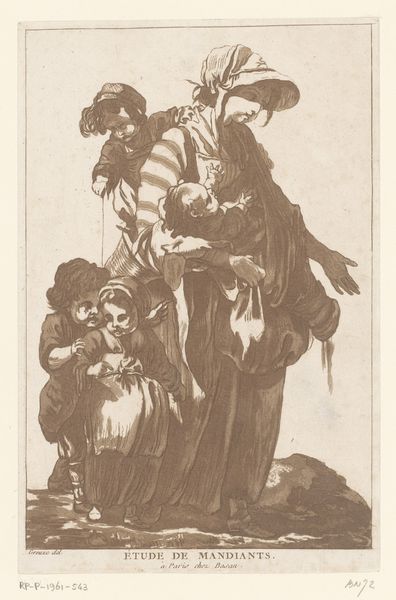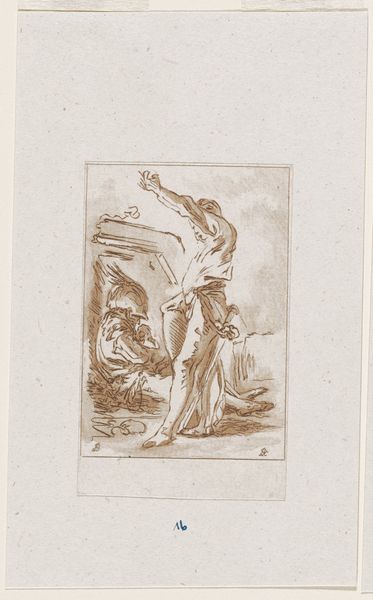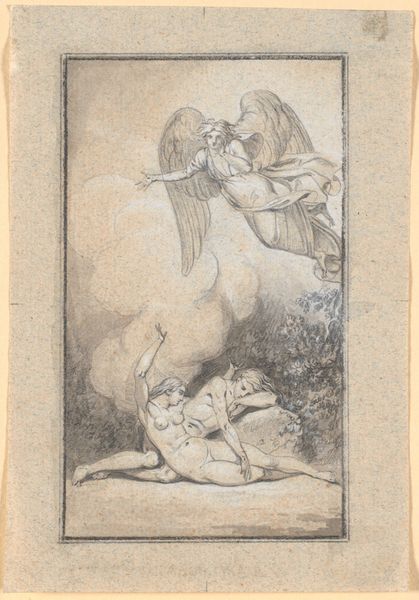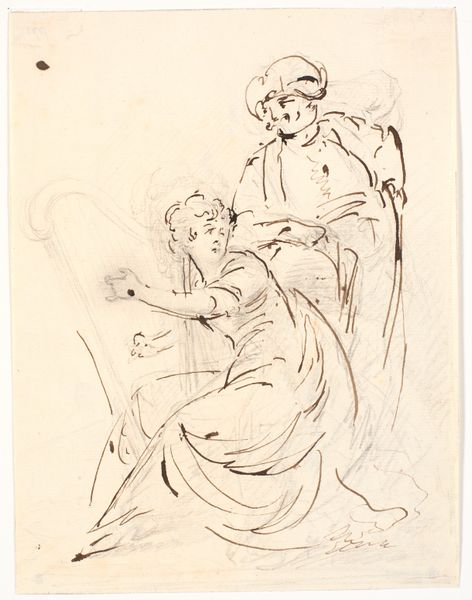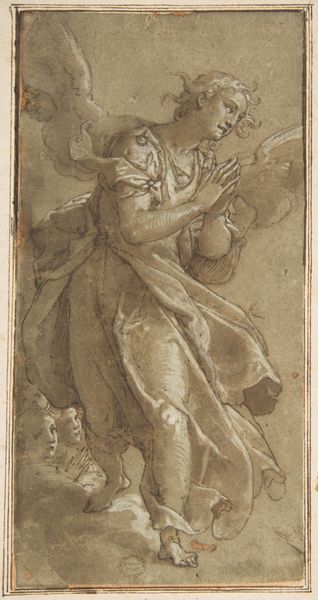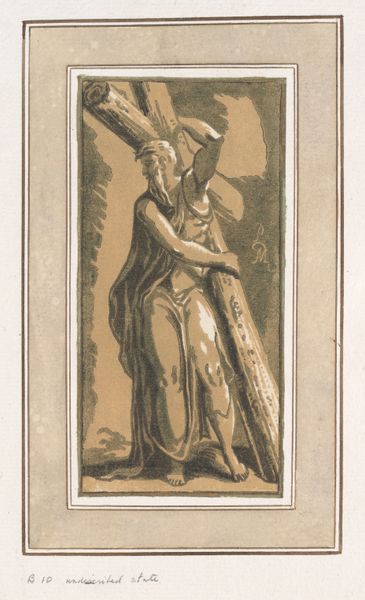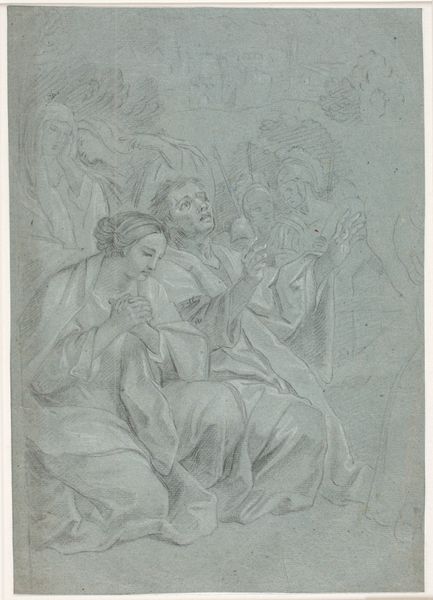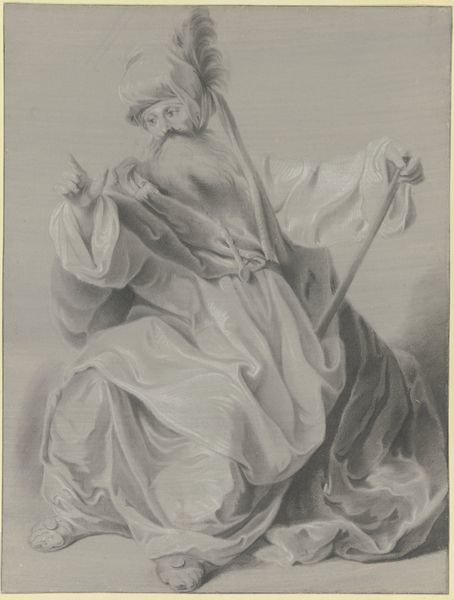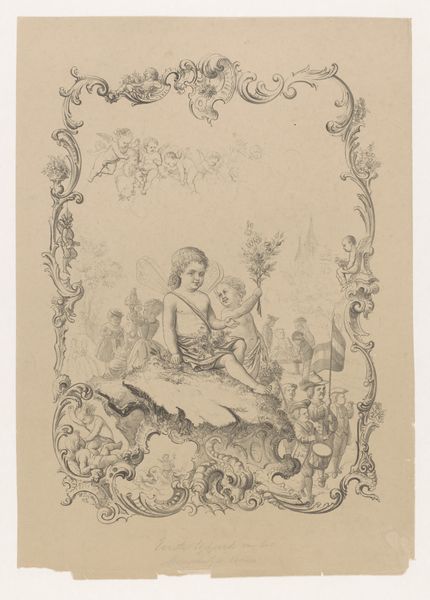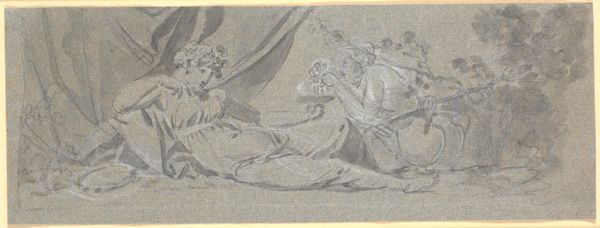
Soldat, der bærer en kvinde bort. Detalje fra Sabinerindernes rov 18th century
0:00
0:00
drawing, pencil
#
drawing
#
figuration
#
pencil
#
history-painting
#
academic-art
Dimensions: 385 mm (height) x 195 mm (width) (None)
Editor: Here we have an 18th-century pencil drawing, "Soldat, der bærer en kvinde bort. Detalje fra Sabinerindernes rov"—or, “Soldier Carrying Away a Woman. Detail from the Rape of the Sabine Women.” It strikes me as a very academic depiction of a rather violent moment. What can you tell me about this work? Curator: It is worthwhile to focus on the material conditions of this piece. Pencil on paper, created within the historical context of the 18th century...what does this say about the means of production and the social status this artwork inhabits? The paper itself, and the pencil...consider how they enable a certain kind of circulation of imagery and ideas. Is this piece part of a larger studio practice, perhaps? Editor: That's interesting. I hadn’t considered the social implications of pencil and paper. I was stuck on the classical narrative. You think the materials democratized artmaking at all? Curator: Absolutely. Think about the accessibility. A drawing like this isn't a large-scale oil painting commissioned by the elite. This allows for broader participation, a kind of artistic labor accessible to more hands. Moreover, its potential as a preparatory sketch shifts the emphasis: it's about process, the thinking *behind* the grand history painting. Do you see it challenging those traditional hierarchies? Editor: I see your point. By focusing on the 'making of', it removes some of the romanticism. It brings attention to the skill, to the labor, inherent in representing this dramatic scene, rather than just the drama itself. Curator: Exactly! It shifts our focus. We're not just consuming the historical narrative. We are invited to consider the very real hand that shaped that narrative, using such humble materials. This changes the value of the artwork, it connects to social strata far beyond wealthy patrons of the time. Editor: That gives me a whole new appreciation for it. I'm now curious about how this artist worked in their studio! Curator: Indeed. Examining art through the lens of its materiality offers a compelling way to understand its role within a specific socio-economic context.
Comments
No comments
Be the first to comment and join the conversation on the ultimate creative platform.
